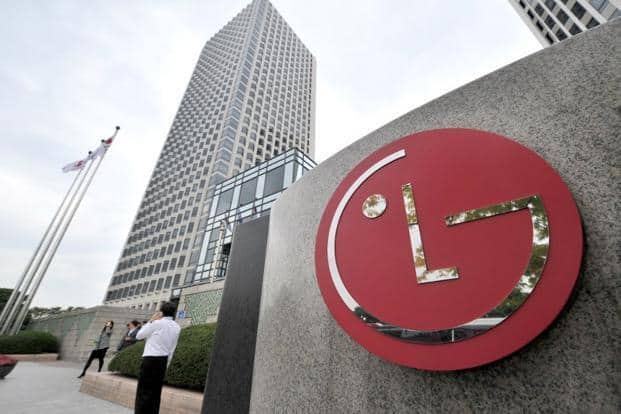LG Group is a South Korean multinational conglomerate that was founded in 1947. Originally known as Lucky-Goldstar, the company has since grown to become one of the largest electronics manufacturers in the world, with a diverse range of businesses spanning electronics, chemicals, and telecommunications.
LG’s electronics division is perhaps its most well-known business, producing a wide range of products such as televisions, smartphones, home appliances, and personal computing devices. The company has a strong focus on innovation and is known for pushing the boundaries of what is possible with technology. For example, LG was one of the first companies to introduce OLED televisions to the market, and it has continued to be a leader in this space.
In addition to electronics, LG also has a strong presence in the chemicals industry. The company produces a range of products including petrochemicals, polymers, and specialty chemicals for a variety of industries such as automotive, electronics, and healthcare. LG’s telecommunications business is focused on producing high-quality mobile devices and infrastructure, including 5G network technology.
Overall, LG Group is a highly diversified conglomerate with a strong focus on innovation, technology, and quality. The company is committed to sustainable growth and is continuously exploring new business opportunities and partnerships to expand its reach and impact.
Founding History of LG
The founding history of LG Group dates back to 1947 when a small company named Lucky Chemical Industrial Corporation was founded by Koo In-Hwoi in Seoul, South Korea. The company produced cosmetics and toothbrushes, but its real breakthrough came in 1952 when it started producing its first radio.
In 1958, Lucky Chemical Industrial Corporation merged with GoldStar, another South Korean company that was founded in 1954 and specialized in producing electrical components. The merged company was named Lucky-Goldstar or LG for short. The new company’s focus shifted to producing electronics, and it quickly became one of the leading manufacturers of home appliances in South Korea.

Throughout the 1960s and 1970s, LG continued to expand its business and diversify its product offerings. It introduced new products such as televisions, air conditioners, and refrigerators, and it also established itself as a major player in the chemical and construction industries. During this period, LG also expanded its operations overseas, setting up manufacturing facilities in countries such as the United States and Canada.
In the 1980s, LG continued to grow and expand its business. The company launched its first personal computer in 1985 and established a mobile phone manufacturing division in 1995. In 1995, the company also changed its name from Lucky-Goldstar to LG Corporation to better reflect its global brand identity.
In the early 2000s, LG continued to innovate and expand its business, introducing new products such as plasma TVs and smartphones. In 2013, LG launched its first OLED TV, which quickly became a market leader in its category. In recent years, LG has focused on developing new technologies such as 5G networks, AI-powered appliances, and electric vehicles.
Today, LG Group is one of the largest and most diversified conglomerates in South Korea, with operations in electronics, chemicals, telecommunications, and other industries. The company continues to be committed to innovation, quality, and sustainable growth, and it is widely recognized as a global leader in many of its key business areas.
Business Divisions of LG Group
LG Group is a large and diversified conglomerate with businesses spanning electronics, chemicals, and telecommunications. Here are the main business divisions of LG:
LG Electronics: LG Electronics is one of the world’s largest electronics manufacturers, producing a wide range of products such as TVs, smartphones, home appliances, and personal computing devices. LG Electronics is particularly well-known for its OLED TV technology and has been a market leader in this area for several years. The company also produces home appliances such as refrigerators, washing machines, and air conditioners.
LG Chem: LG Chem is a chemical manufacturing division of LG Group, producing a range of products including petrochemicals, specialty chemicals, and batteries. LG Chem is a leading manufacturer of lithium-ion batteries and is known for its work in developing batteries for electric vehicles.
LG Household & Health Care: LG Household & Health Care is a division of LG Group that produces a wide range of personal care products such as cosmetics, skin care, and hair care products. The company also produces household cleaning products and beverages.
LG Innotek: LG Innotek is a division of LG Group that focuses on developing and producing advanced materials, components, and modules for a variety of industries such as electronics, automotive, and LED lighting.
LG Display: LG Display is a subsidiary of LG Group that produces display panels for a variety of applications such as TVs, smartphones, and computer monitors. The company is a leading manufacturer of OLED displays and has been at the forefront of developing new technologies such as flexible displays.
LG Uplus: LG Uplus is a telecommunications division of LG Group that provides mobile and broadband services in South Korea. The company is focused on developing new technologies such as 5G networks and is a major player in the Korean telecommunications market.
Overall, LG Group’s diverse business divisions demonstrate the company’s commitment to innovation, quality, and sustainability across a range of industries. The company’s focus on developing new technologies and products has allowed it to remain a market leader in many of its key business areas.
Going places – Expansion of LG Group into international markets
LG Group has expanded its business operations globally over the past several decades. Here are some key milestones in LG’s international expansion:
Expansion into the United States: In the late 1970s, LG established its first overseas production plant in the United States, setting up a facility in Alabama to produce home appliances such as refrigerators and washing machines. This marked the beginning of LG’s international expansion and paved the way for the company to establish a strong presence in the American market.
Expansion into Europe: In the 1990s, LG began expanding its operations into Europe, setting up manufacturing facilities in countries such as Germany, France, and Poland. The company also established sales and marketing offices across the continent to better serve European customers.
Expansion into emerging markets: In the 2000s, LG focused on expanding its business in emerging markets such as China, India, and Brazil. The company established new manufacturing facilities in these countries to produce products such as smartphones and TVs, and it also invested heavily in marketing and advertising to build brand awareness.
Expansion into new product categories: LG has also expanded into new product categories in recent years, such as electric vehicles and renewable energy. The company established a joint venture with General Motors in 2019 to produce electric vehicle components, and it has also invested in renewable energy projects such as solar and wind power.
Strategic partnerships and acquisitions: In addition to expanding its operations through organic growth, LG has also pursued strategic partnerships and acquisitions to further expand its business. For example, the company acquired Zenith Electronics in the United States in 1995, which helped LG become a major player in the American TV market. In 2013, LG acquired the home appliance division of Siemens, further expanding its presence in Europe.
Overall, LG’s international expansion has allowed the company to diversify its operations and establish a strong presence in key global markets. The company’s focus on innovation, quality, and customer service has helped it succeed in a highly competitive global marketplace.
Financial Performance of LG Group
LG Group has been a consistently profitable company over the years, with a track record of strong financial performance. Here are some key financial highlights for LG Group:
Revenue: LG Group’s revenue has been consistently strong over the years. In 2022, the company’s electronics arm reported revenue of USD 67 billion.
Net income: LG Group’s net income has also been consistently strong. In 2022, the company reported net income of USD 1.4 billion.
Stock performance: LG Group’s stock has performed well over the years, with the company’s shares trading on the Korea Stock Exchange. The company’s stock price has generally tracked upward over the long term, with some volatility due to market conditions.
Business segment performance: LG Group’s business segments have performed well over the years, with its electronics division in particular driving strong financial results. In 2022, LG Electronics reported revenue of USD 66.7 billion.
Investment in research and development: LG Group invests heavily in research and development, which has helped drive the company’s innovation and product development efforts. In 2022, the company’s investment in research and development totaled USD 968 million.
Overall, LG Group’s financial performance has been strong, reflecting the company’s focus on innovation, quality, and customer service. The company’s diversified business segments have allowed it to weather market volatility and continue to deliver strong financial results over the long term.
Also Read: Samsung Electronics- History of Korean Electronics Giant
To read more content like this, subscribe to our newsletter



